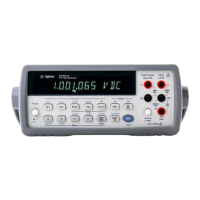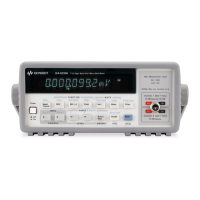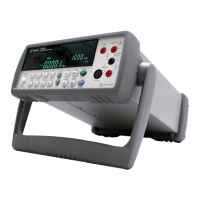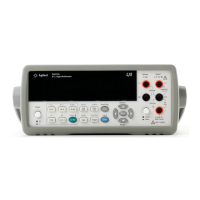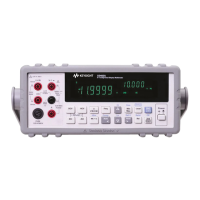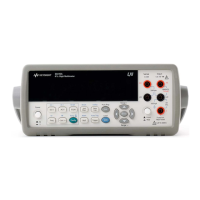Appendix E High Resolution Digitizing With the 3458A 351
Choice of Two Measurement Paths
The 3458A provides two different input measurement paths: the standard DCV
path and the track-and-hold path (see Figure 52). The track-and hold path is used
for subsampling and direct sampling. The DCV path is used for direct sampling
alone. At your discretion, you may use the standard DCV path for subsampling,
but you have to program the algorithm for data capture.
Using the DCV Path
for Direct Sampling
The standard DCV path is selected for you when you program the command
"PRESET DIG". This command establishes default parameters to directly digitize
the input signal, assuming that you will want 256 samples at 50 kSamples/s with
full scale set at 10 V peak. The trigger circuit assumes that you want to trigger on
the input signal at
0 V level, positive slope, AC coupled. Hence, with these default conditions you
can capture at least one cycle from 200 Hz up to 25 kHz.
The standard DCV path also offers speed and resolution tradeoffs from 18 bits (5
l/2 digits) at 6 kSamples/s to 16 bits (4 l/2 digits) at 100 kSamples/s. The noise
floor on the 10 V range for the corresponding sample rates are 0.005%, and 0.05%,
respectively.
As the resolution is increased in the DCV path there is a corresponding increase
in the aperture time. Hence, the obvious trade-off for lower noise and more
resolution is the loss of information because of the broadening of the sample
aperture. To capture the peak value of a pulse, the aperture must be no wider than
the pulse width. From a practical viewpoint, trigger uncertainty can make the task
of capturing peak amplitudes nearly impossible for pulses near the width of the
sampling aperture. The solution is to narrow the aperture to a point where the
bandwidth of the input amplifier is the resolution limiting factor, not the sample
aperture.
Figure 51. Direct
sampling acquires the
wave form in one pass of
the input. Sequential
sampling requires a
repetitive signal where
the period is
reconstructed in several
passes. The numbers
shown represent
samples acquired in one
period of the input.
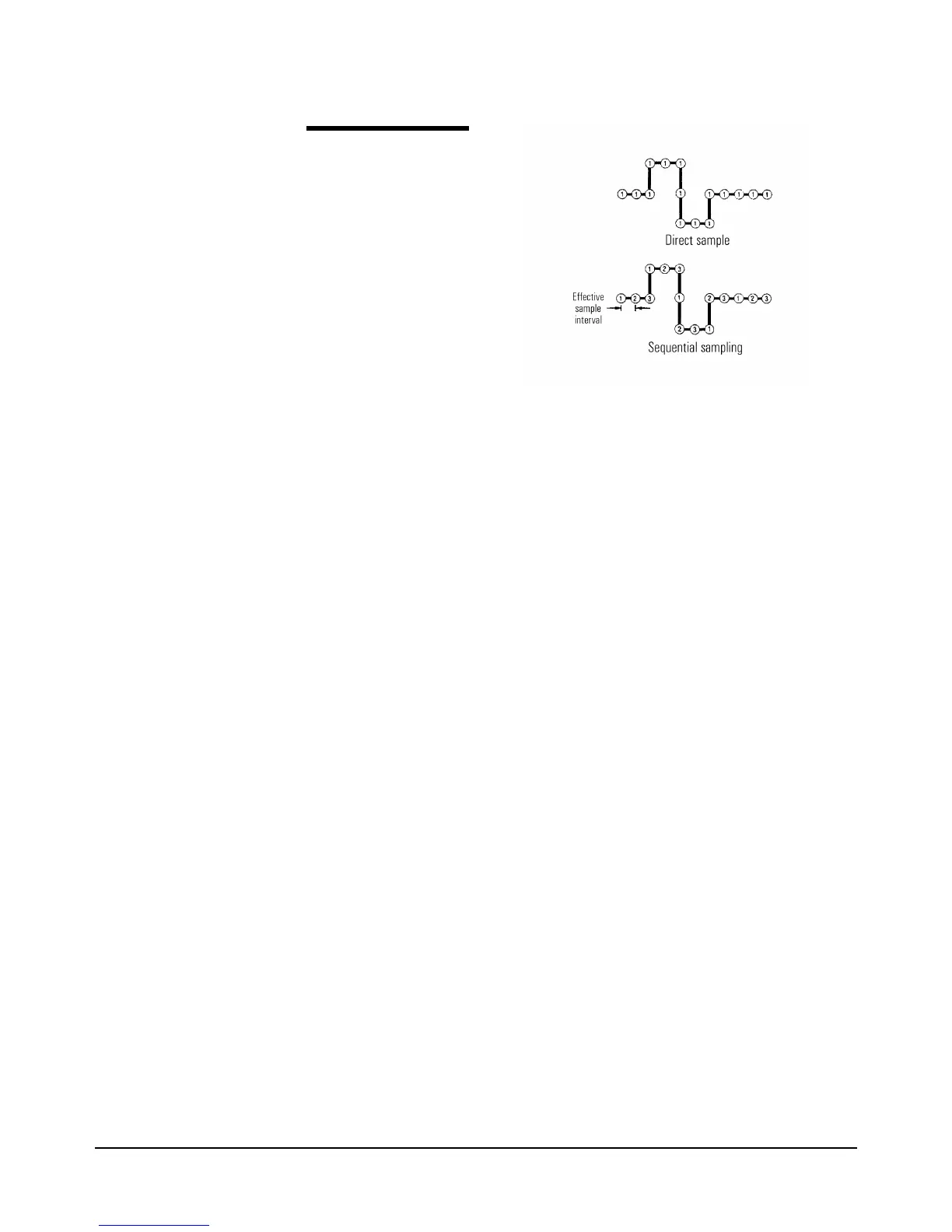